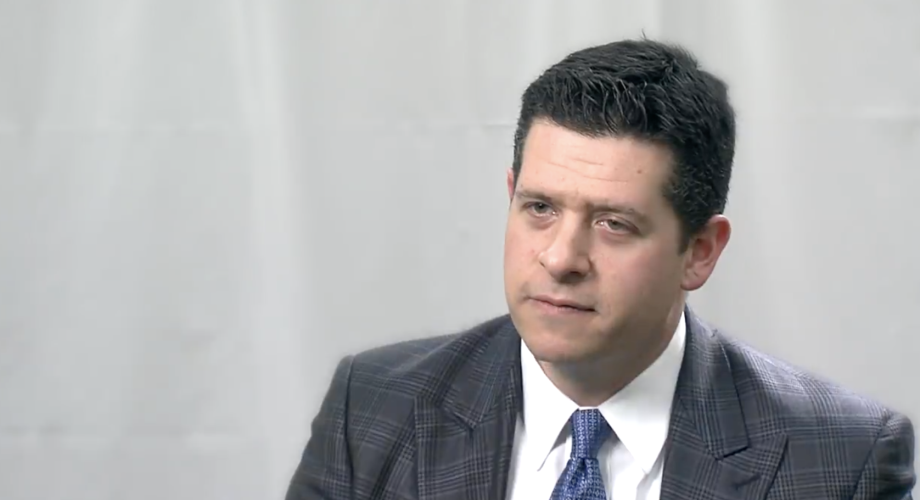The real estate acumen possessed by Andrew Kadish isn’t something he acquired while seeking a post-college career choice. It’s a family thing. The longtime CAPREIT executive, who recently progressed from President to CEO, vividly recalls learning the business at a young age from his late father, Dick Kadish. Family vacations often included stops at apartment communities to talk business. He has ascended to one of multifamily’s aspiring leaders and recently took the time for this candid Q&A with units Magazine.
As we sit here in the first quarter of 2024, how would you describe the state of the apartment industry?
Kadish: What you are seeing now is there is a tremendous—probably record—level of dry powder that is on the sidelines awaiting the next buying opportunity. On the other end, you have an extremely restricted inventory of communities that are available to be sold. A lot of owners are worried about whether they are selling at the bottom of the market and are hopeful to delay having to transact. They are engaging in some pretend-and-extend discussions and hoping that, over the next three to six months, some rate cuts and improving operations will enable them to sell at a higher price. Ultimately, while a lot of money is waiting for the next buying opportunity, there isn’t much inventory to select from.
Describe CAPREIT’s portfolio and your strategy when it comes to building the company’s portfolio. What are your plans for 2024?
Kadish: We have traditionally been a 50/50 player—50% market-rate and 50% LIHTC or workforce housing. We consider ourselves a premier workforce-housing provider in the secondary, tertiary areas of the nation, and that will continue to be our primary focus. We’ve also expanded into the build-to-rent development pipeline and are closing on our first acquisition opportunity in Greenville, South Carolina. We’re also exploring additional build-to-rent opportunities throughout the Southeast over the next 12 months.
This is certainly a very big-picture question, but what do you think needs to be done to create more affordable housing?
Kadish: There needs to be significant government financial support for affordable and workforce housing because we currently do not have enough. We’re scrounging for funds and building an affordable housing development shouldn’t be a miraculous, monumental feat to achieve. Moving forward, we need to make it a much easier process to ensure that our low-income earners and middle-income workforce residents have places to live. Right now, it’s an ever-dwindling supply.
What’s tremendously curtailing the development and replenishment of our LIHTC affordable housing stock is the incredible amount of red tape to navigate. It is extremely difficult to develop, acquire and maintain affordable housing stock because of the significant amount of government intervention and restriction. With less government overreach, operators would have the opportunity to build more affordable housing stock and preserve the stock that is already in existence.
As the head of CAPREIT, one of your roles is building the company culture. What kind of culture do you aim to create at CAPREIT and, relatedly, what are some of the most important leadership lessons you’ve learned since taking the reins of the company from your father, Dick Kadish?
Kadish: We have a core values mantra that we refer to as FACE IN, which represents family, accountability, communication, excellence and integrity. I like it because our number one core value—which is something I espouse throughout all my conversations with company personnel, outside investors and our residents—is that we treat everyone as if they were a member of the family. It was truly a hallmark of my dad’s leadership, and it’s something I adhere to in my leadership style.
You also are an active investor who advises start-ups and early-stage businesses in the real estate, technology and social well-being sectors. Combining your knowledge of the start-up space with your perspective as the CEO of CAPREIT, in what ways do you think the apartment industry is most likely to advance technologically in the next five to 10 years?
Kadish: I think it’s going to be focused on construction materials, targeted upon how to build faster and safer. In light of ever-exorbitant and ever-rising insurance rates, we need to be able to build at leaner pricing but in a very safe manner. With the catastrophic events we’ve experienced over the past few years, whether it’s wildfire, incredible rains or hurricanes, I think a lot of the proptech should focus on making building supplies stronger and more efficient, which will help streamline the timeline for development.
Additionally, something that is affecting all operators—whether you’re a vertically integrated company like mine or a third-party operator—is the lack of service technicians in the industry. It’s an ever-dwindling supply, and we need to move forward and employ technology to help attract and retain these techs. We need to face the fact that there is not going to be a handyman on every corner that we can hire to be our service manager. We’re going to have to utilize tech to safeguard ourselves by providing them with the tools to make their jobs more efficient.
